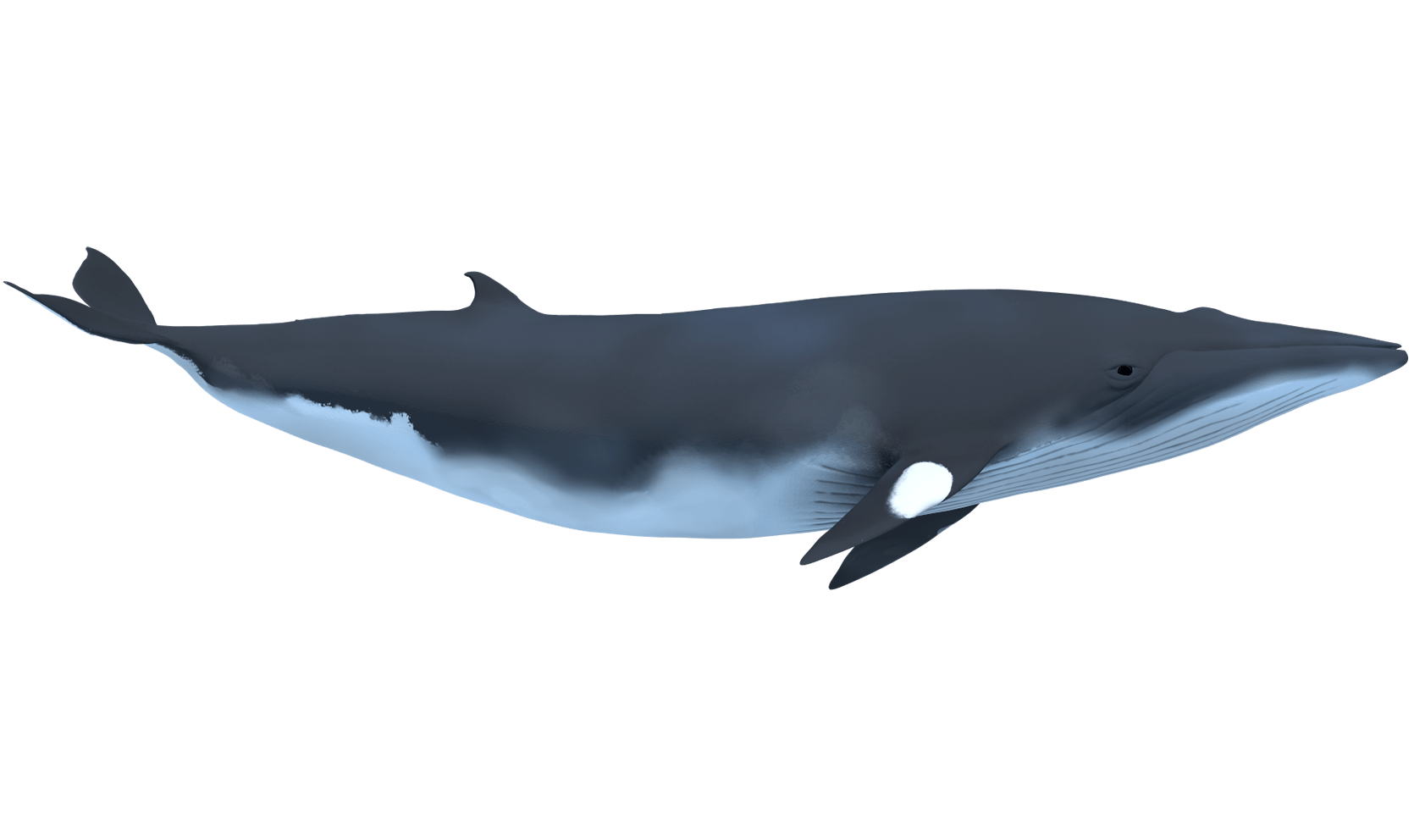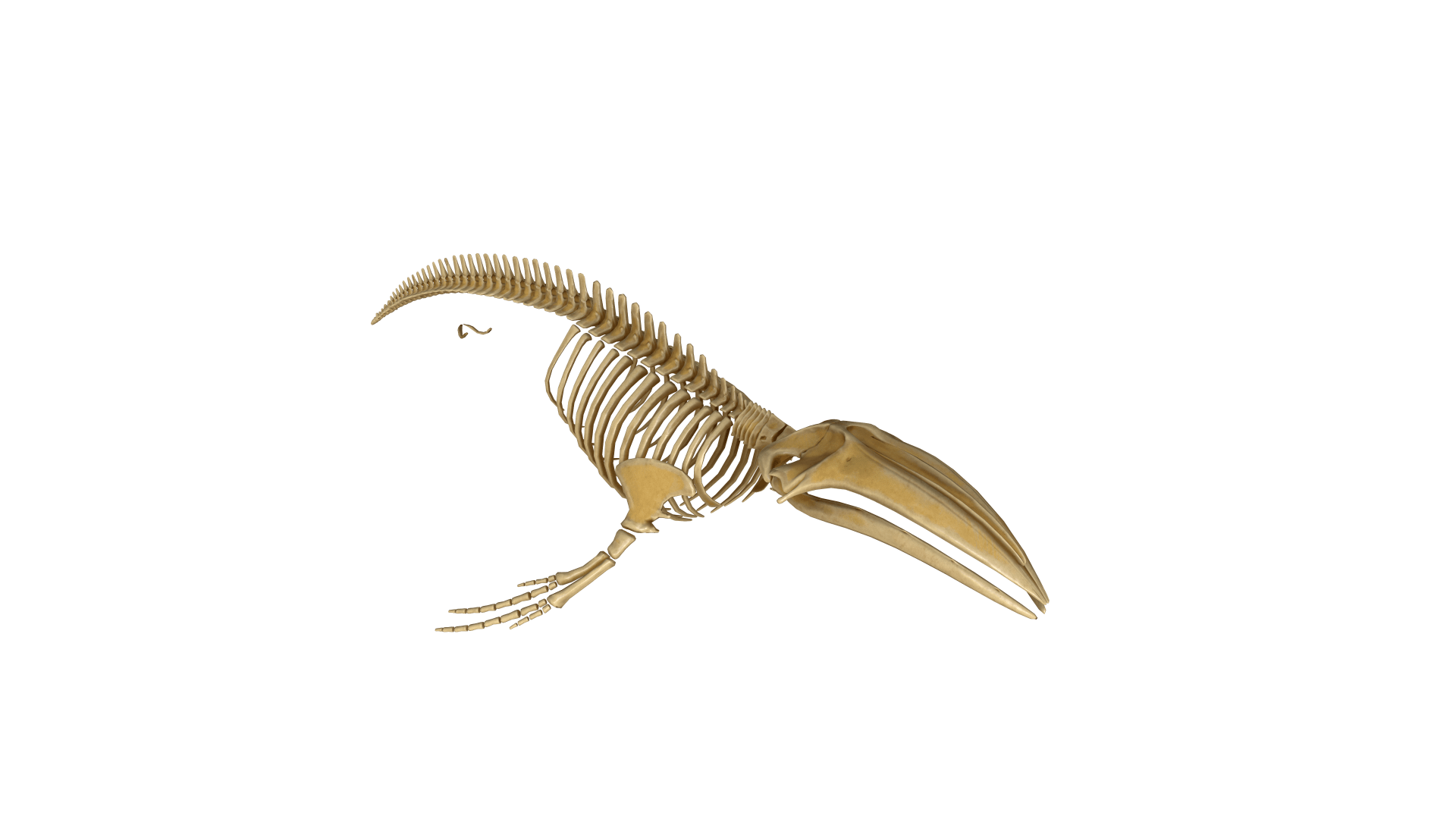A minke whale like Petits Escoumins weighs the equivalent of 7 small cars!
Petits Escoumins had never been formally identified during her lifetime. Many minke whales visit the St. Lawrence, but few researchers study them, so it is very possible that she had visited the area without ever having been photographed.
Oftentimes, scars on the dorsal fin offer the best clues to identify minke whales, in addition to the general shape of this fin. According to research data collected by Meriscope, 54% of the minke whales that frequent the St. Lawrence Estuary bear distinctive markings.
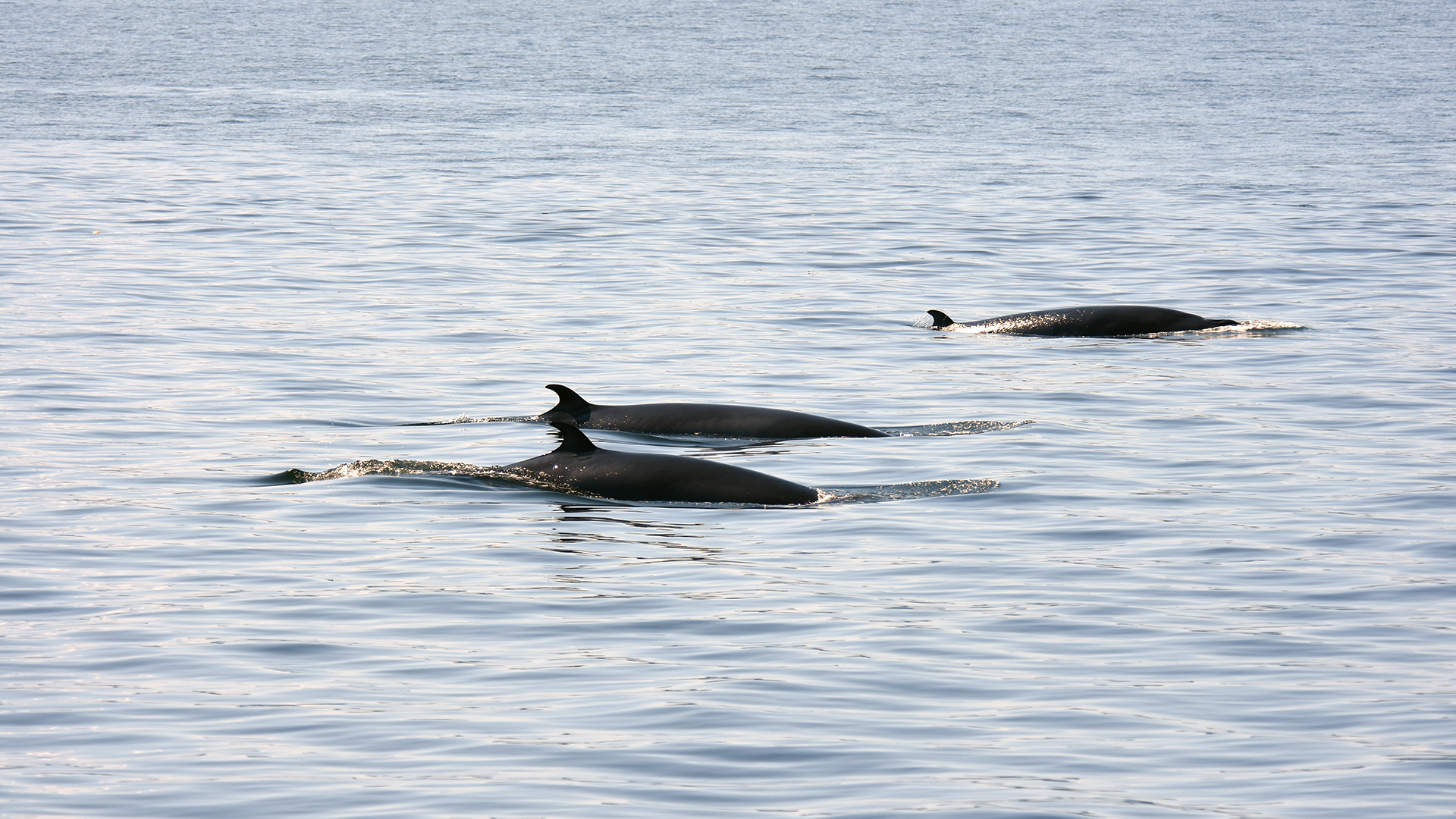
Credits: GREMM
Many minke whales visit the St. Lawrence. They are generally solitary animals, but they do sometimes congregate in areas where the feeding is good.
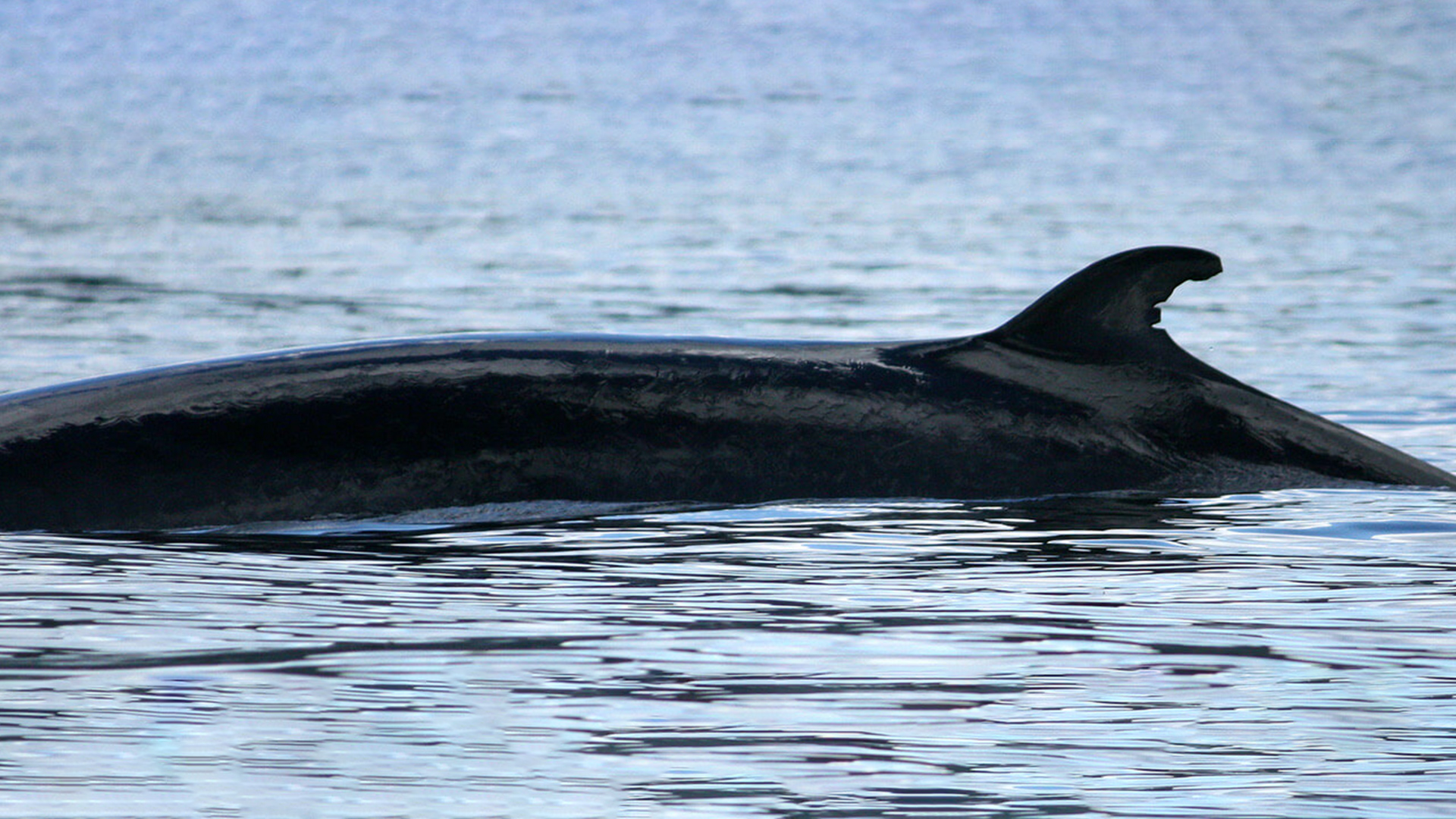
Credits: Meriscope
Known since 2005, this minke whale owes its nickname “Diavolezza” to the small notches in the animal’s dorsal fin. Can you make out the horns of the devil?

In October 1997, a minke whale carcass washes ashore at the mouth of the Petits Escoumins River, in the yard of a local captain. As the flensing team gets to work, they discover a second whale...
in the belly of the first one! The stranded animal is a pregnant female! How did this whale die? It’s hard to say... We were unable to determine whether the fractures to her scapula (shoulder blade) were caused before her death or after, as she was being moved.
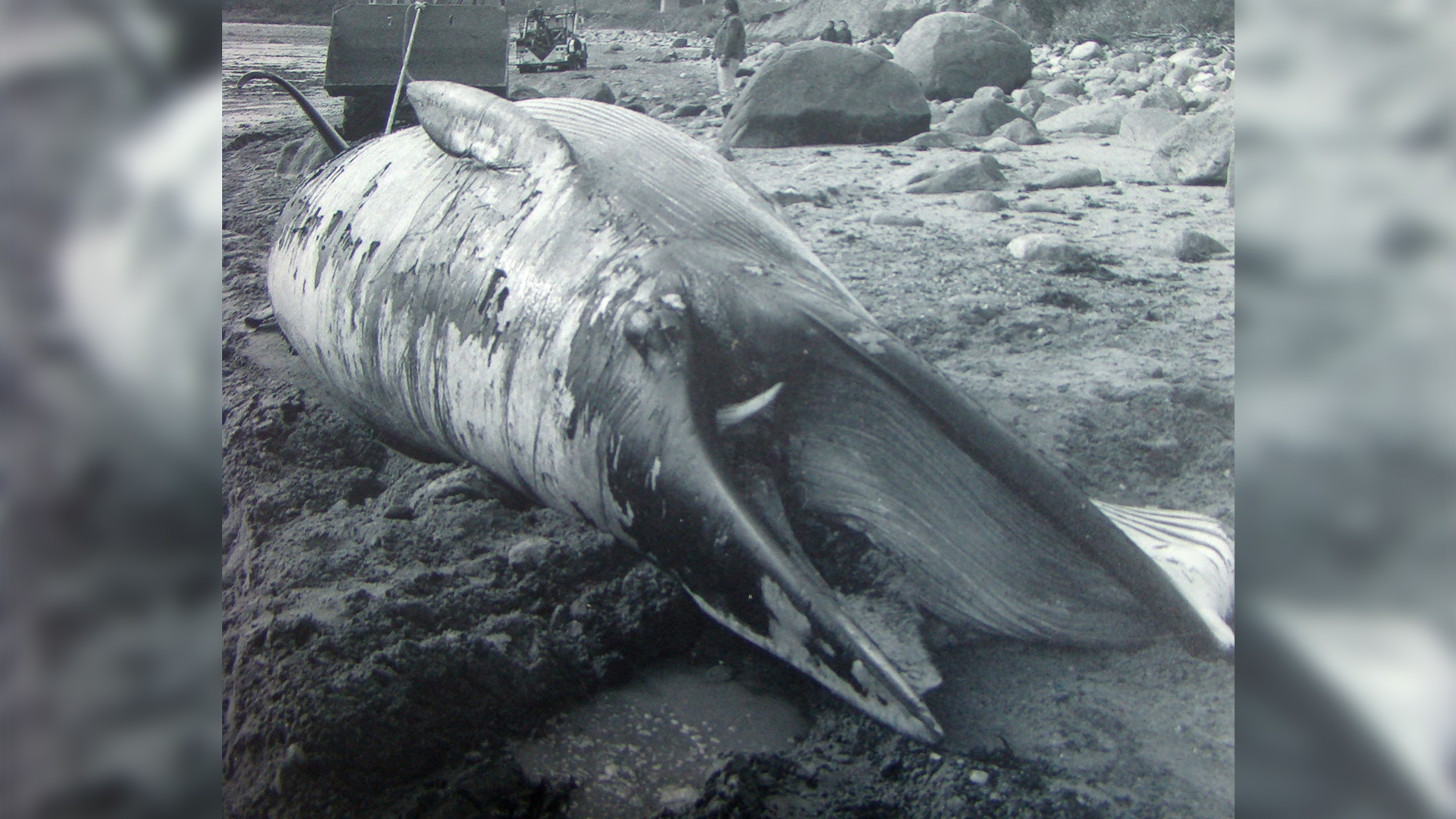
Credits: GREMM
Washed up carcass of Petits Escoumins near the mouth of the river that gave her her name.
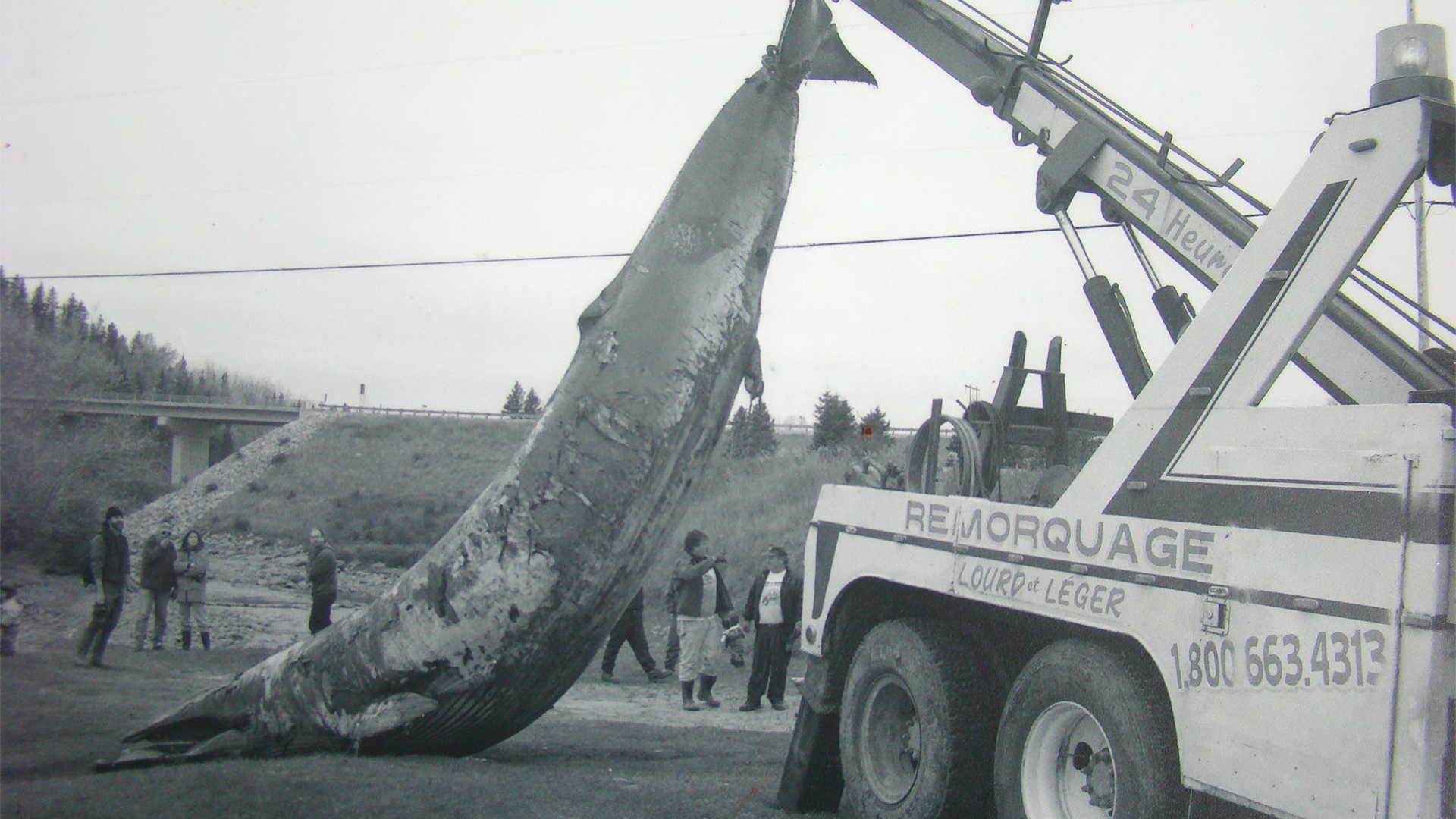
Credits: GREMM
The minke whale carcass is moved to a better place to be flensed. At this point, it was not yet known that this was a pregnant female.

Want to look smart the next time you go whale-watching in the St. Lawrence? When you spot a minke whale, announce that it’s a female! And you will almost certainly be right.
This finding is based on genetic analyses carried out on biopsies by Meriscope as well as carcass data collected by the Quebec Marine Mammal Emergency Response Network. Males migrate to polar regions farther north.
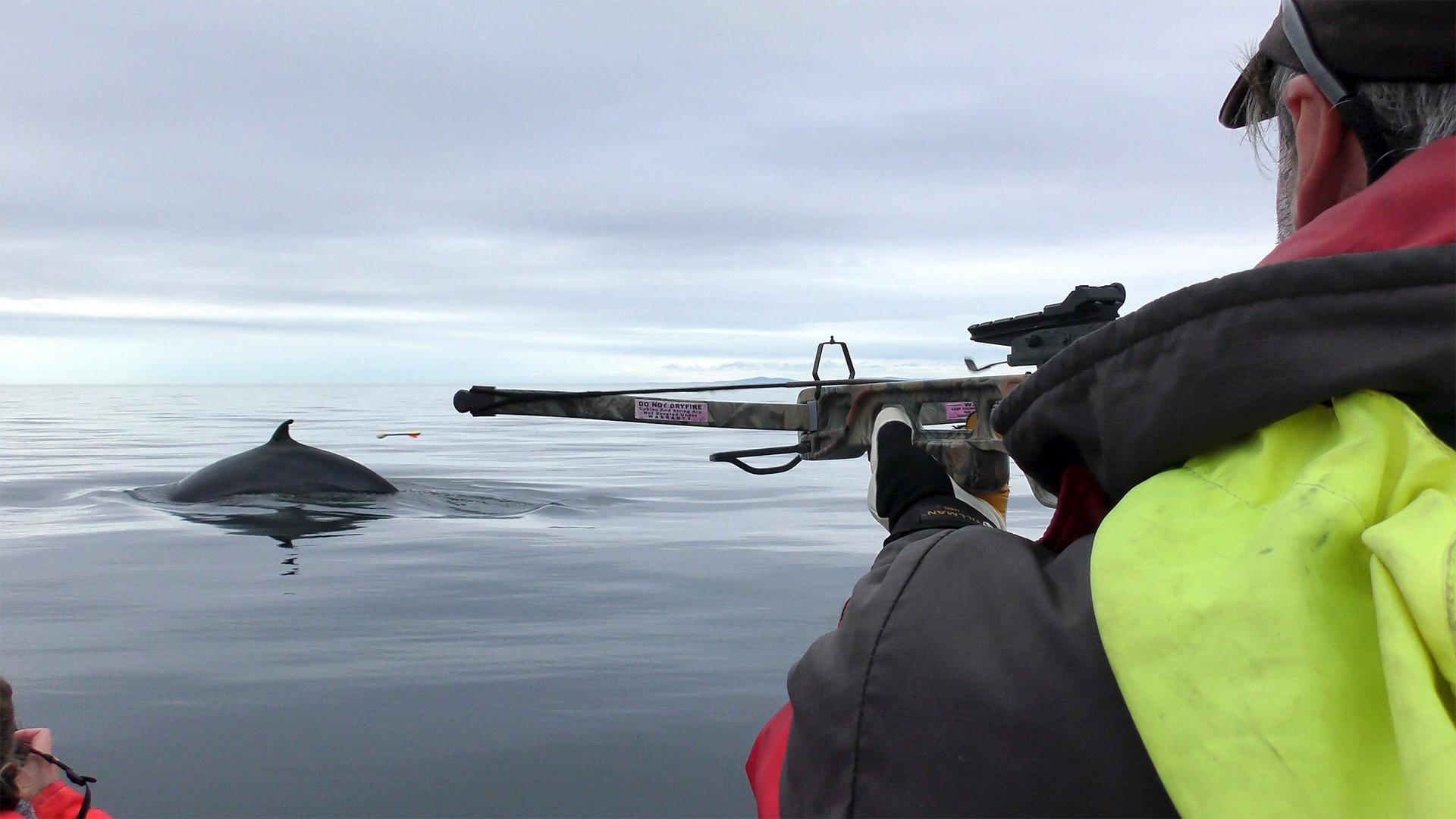
Credits: Meriscope
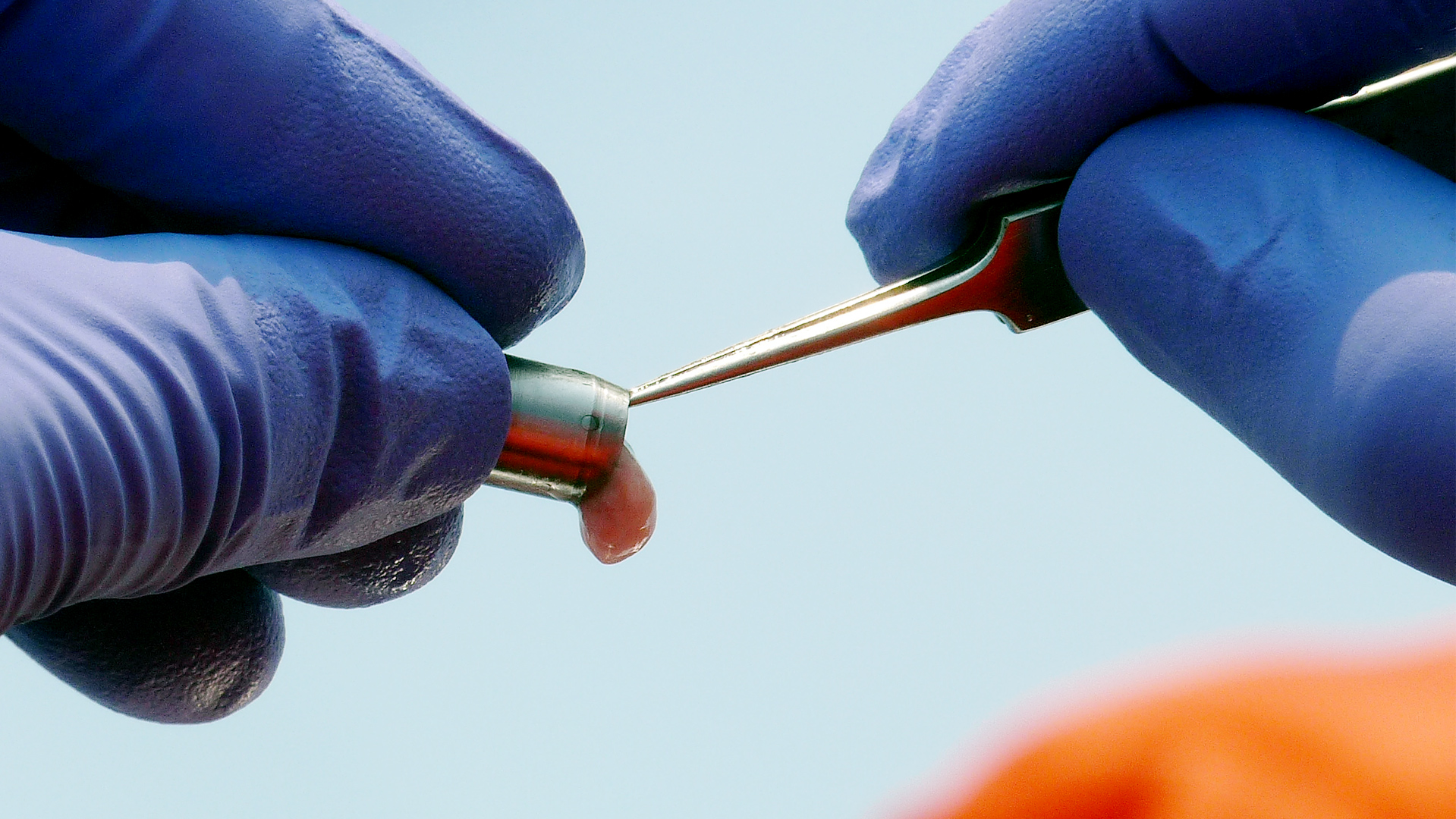
Credits: Meriscope
The Meriscope team collects skin and fat samples from minke whales. These biopsies are taken using a dart fired from a crossbow.

Even if males and females live separately during the summer, this is not really a problem in terms of reproduction... When Petits Escoumins arrived in the St. Lawrence, she had a single objective: to eat!
To catch her meals, she probably used a variety of acrobatic techniques.
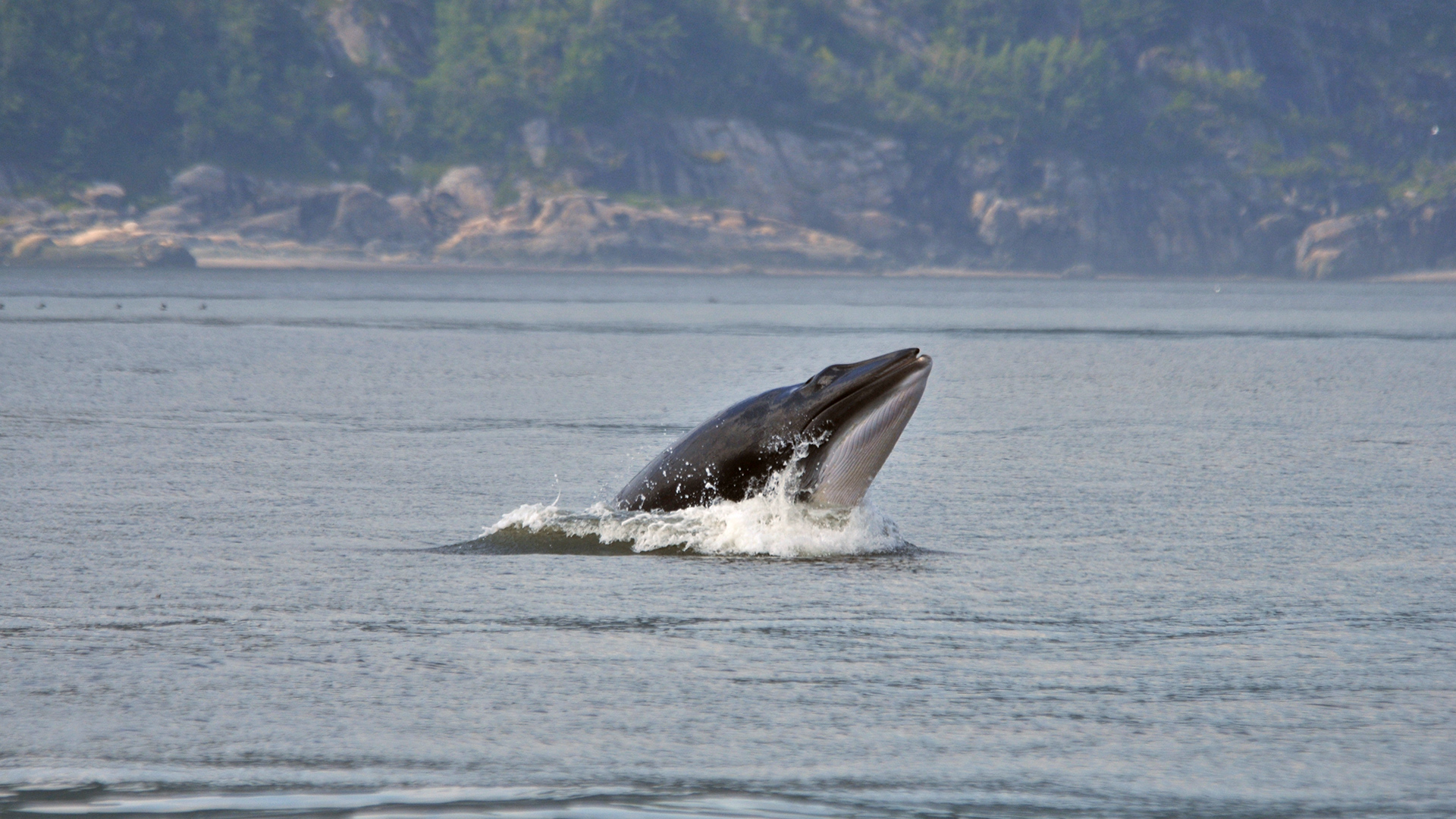
Credits: GREMM
Minke whales sometimes use the water surface to trap fish. They then lunge and close their jaws on a mouthful of prey at the surface.
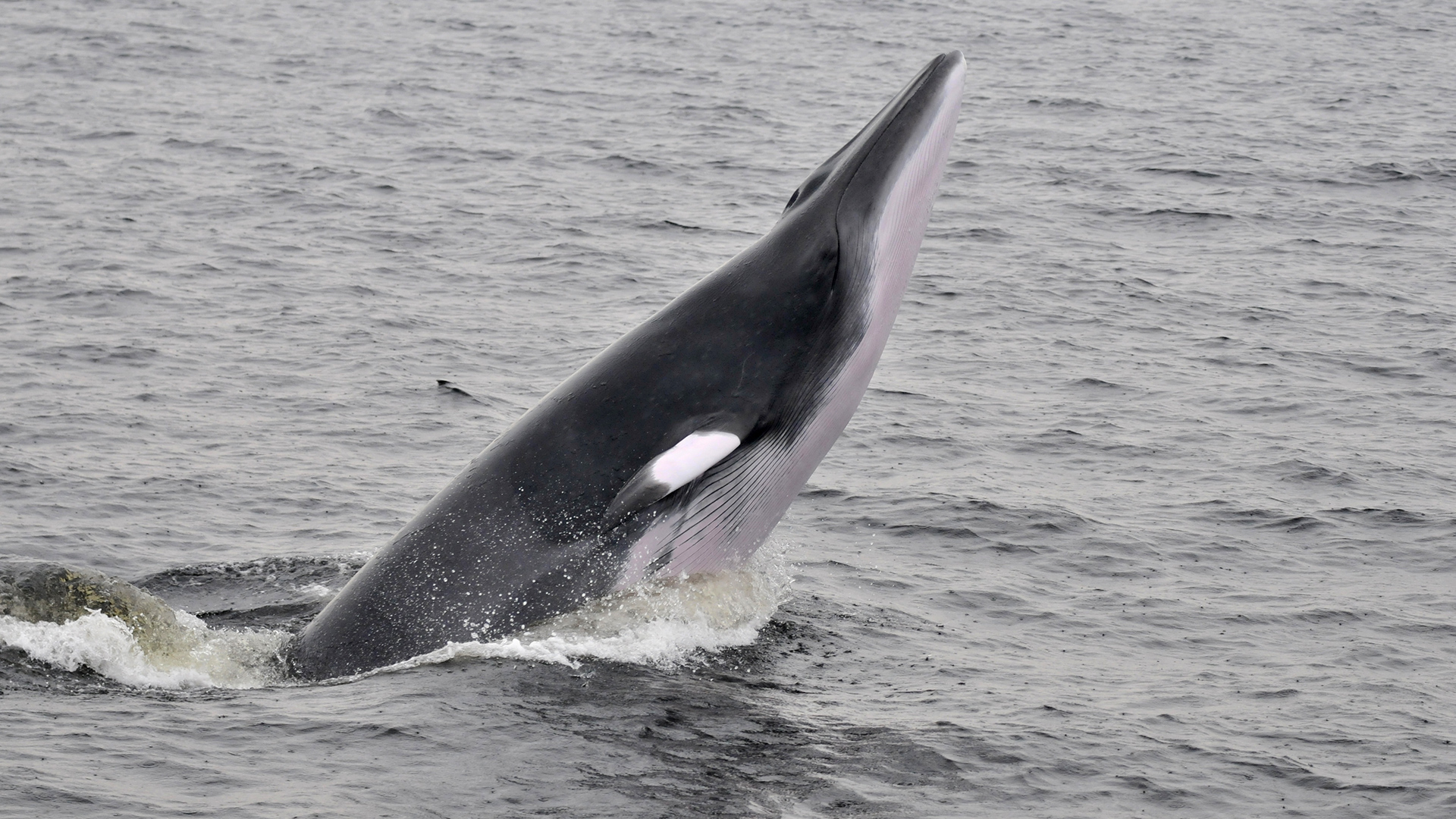
Credits: GREMM
The animal’s belly and pectoral fin can be seen on the surface.

Credits: GREMM
When actively hunting, minke whales are sometimes seen rolling on the surface.

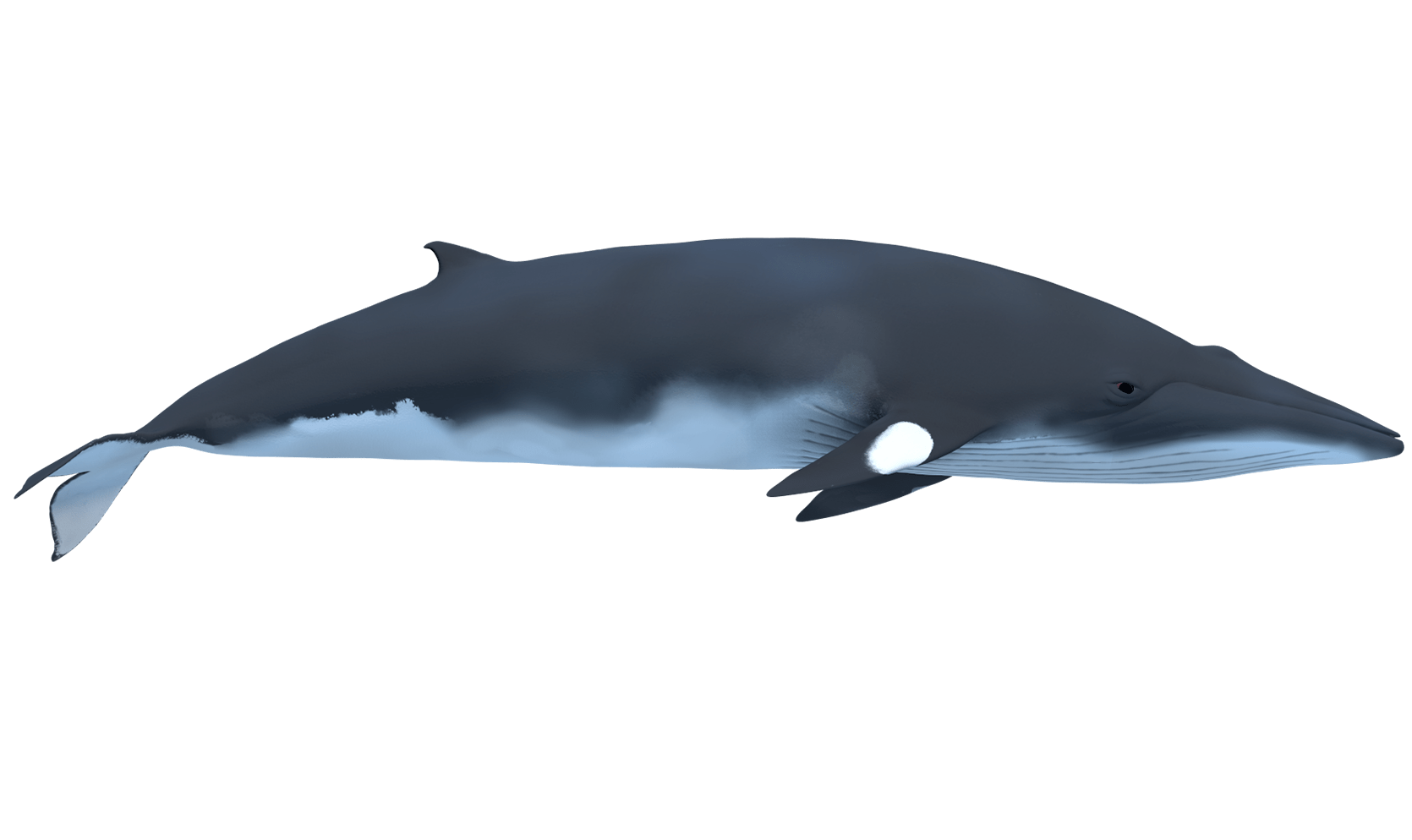
It was estimated that Petits Escoumins’s fetus was approximately 6 to 8 months into its development. The total gestation period for a minke whale is 10 months. At this stage of development, the bones of the fetus are much more fragile than those of an adult and can easily break if they are cleaned the same way.

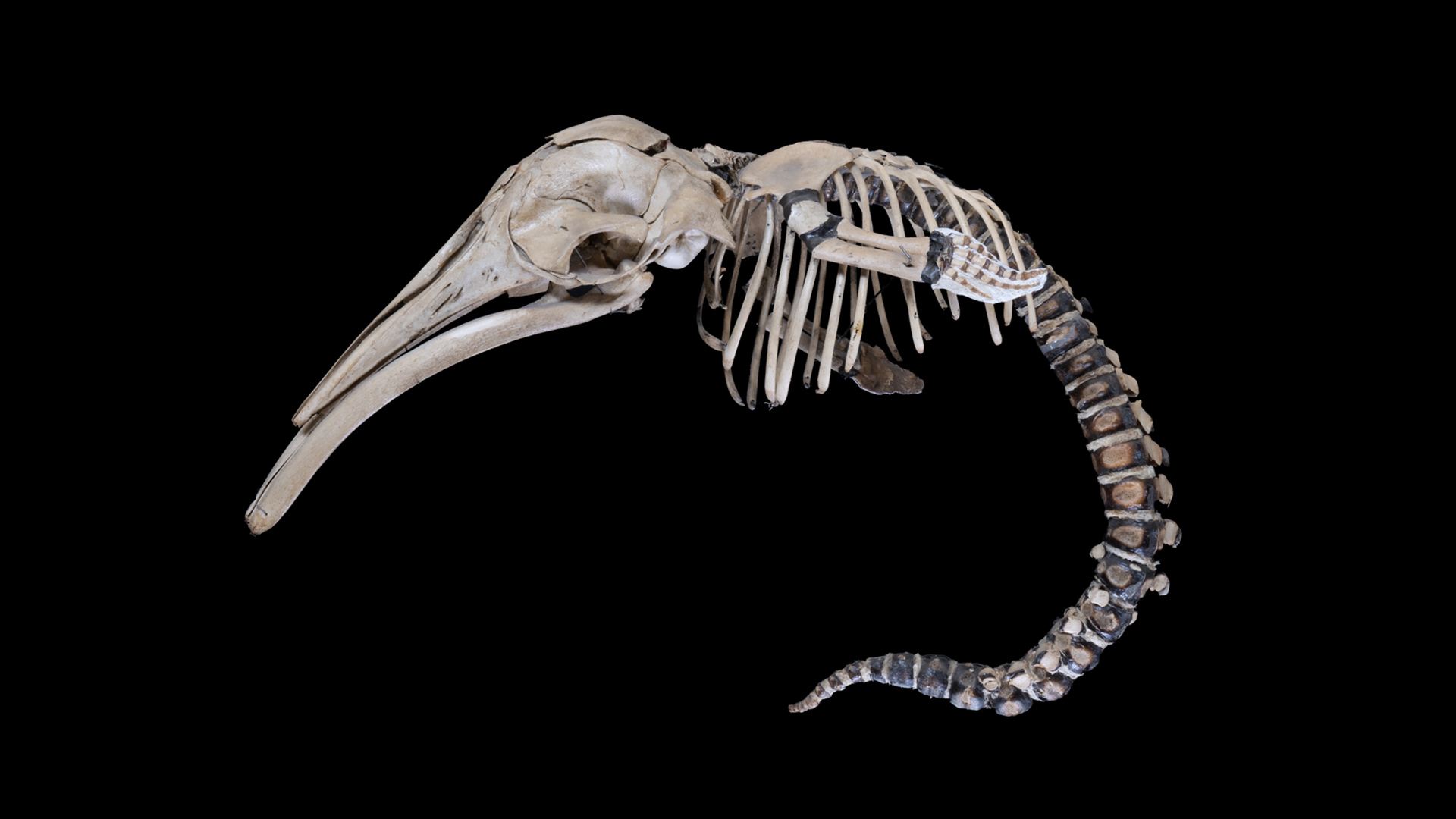
It was estimated that Petits Escoumins’s fetus was approximately 6 to 8 months into its development. The total gestation period for a minke whale is 10 months. At this stage of development, the bones of the fetus are much more fragile than those of an adult and can easily break if they are cleaned the same way.
The fetus was therefore entrusted to the expert hands of Pierre-Henri Fontaine, who managed to preserve it using a technique that resembles mummification. It is for this reason that the fetal skeleton is darker in colour than our other skeletons.

Credits: GREMM
Skeleton of the fetus that Petits Escoumins was carrying at the time of her death.

Generally speaking, it is difficult to tell a male from a female. But if we can get a look at the whale’s belly, the position of the genital slit will give us the answer. Most of the time, the genitals of males remain hidden inside the genital slit.
This allows them to stay hydrodynamic while also keeping their testicles warm. Only during mating does the penis – an organ with a "seeker head" whose movement can be controlled by the animal! – come out of the genital slit.
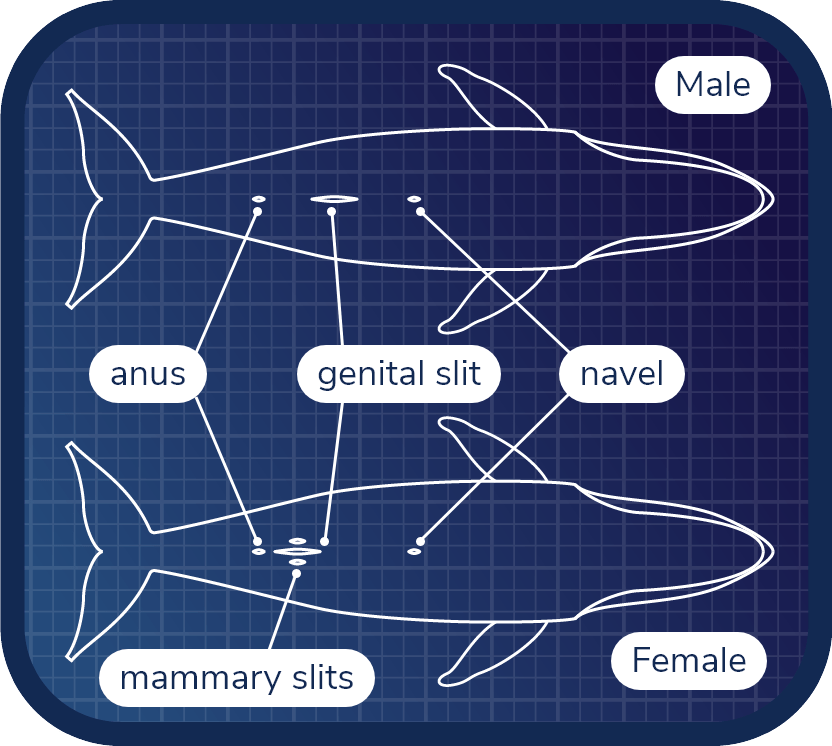
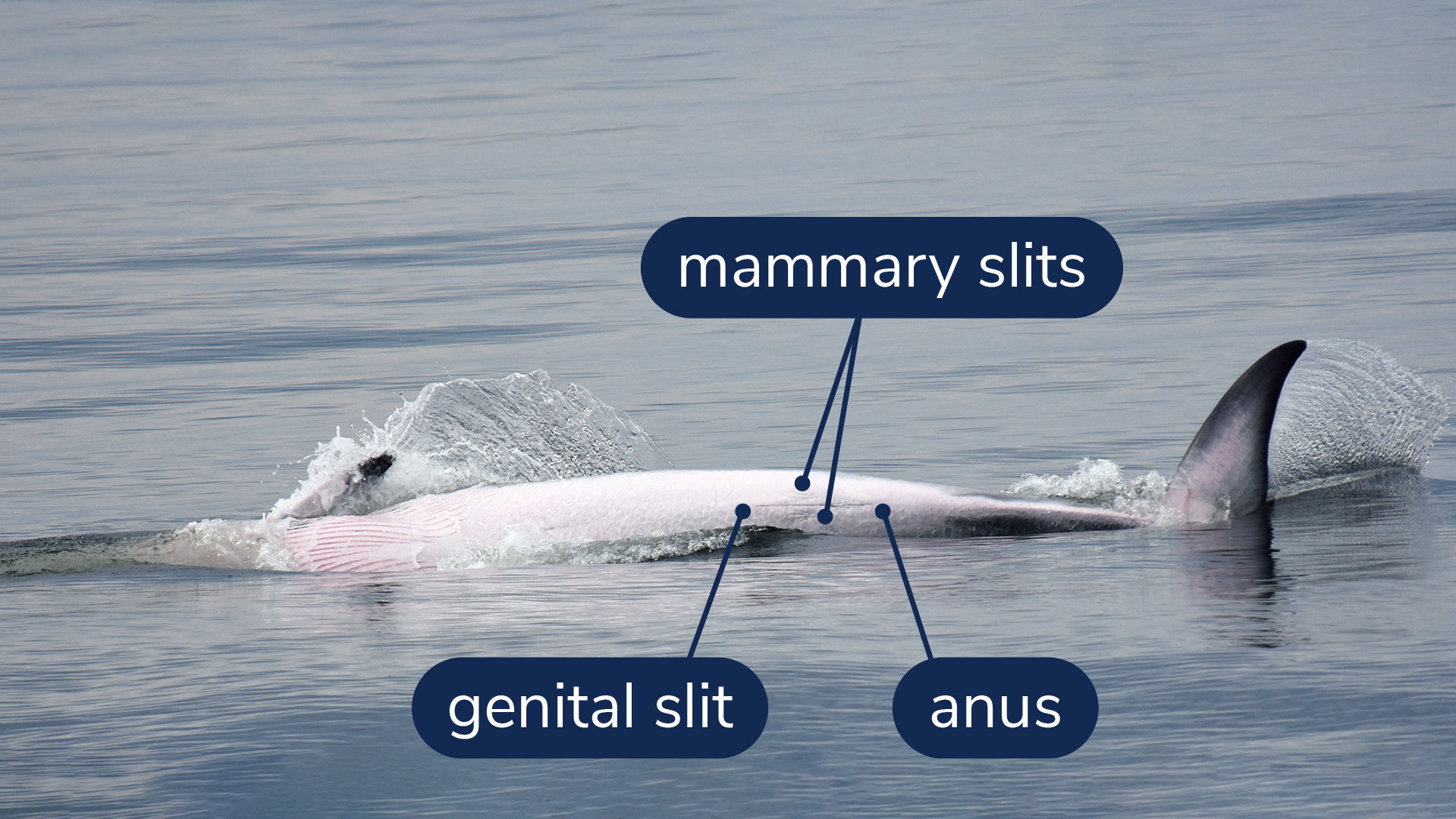
Credits: GREMM
This minke whales lunges to the left, exposing its belly. We can see its left pectoral fin as well as the left half of its tail. On the white belly, we can see a genital slit between two breast slits, all of which are positioned very close to the anus: it’s a female!

How do whales select their mate?
Some cetaceans like humpbacks and right whales are known to have gathering places where they reproduce. Males may engage in intense fighting in these waters. This type of behaviour is not observed in minke whales, however.
In fact, we have no idea how Petits Escoumins chose her partner. What is known, however, is that reproduction takes place at a specific time of the year. For minke whales, like most whales that visit the St. Lawrence, this occurs in winter and in more temperate waters. Once mating is completed, males and females go their separate ways and females care for their young.
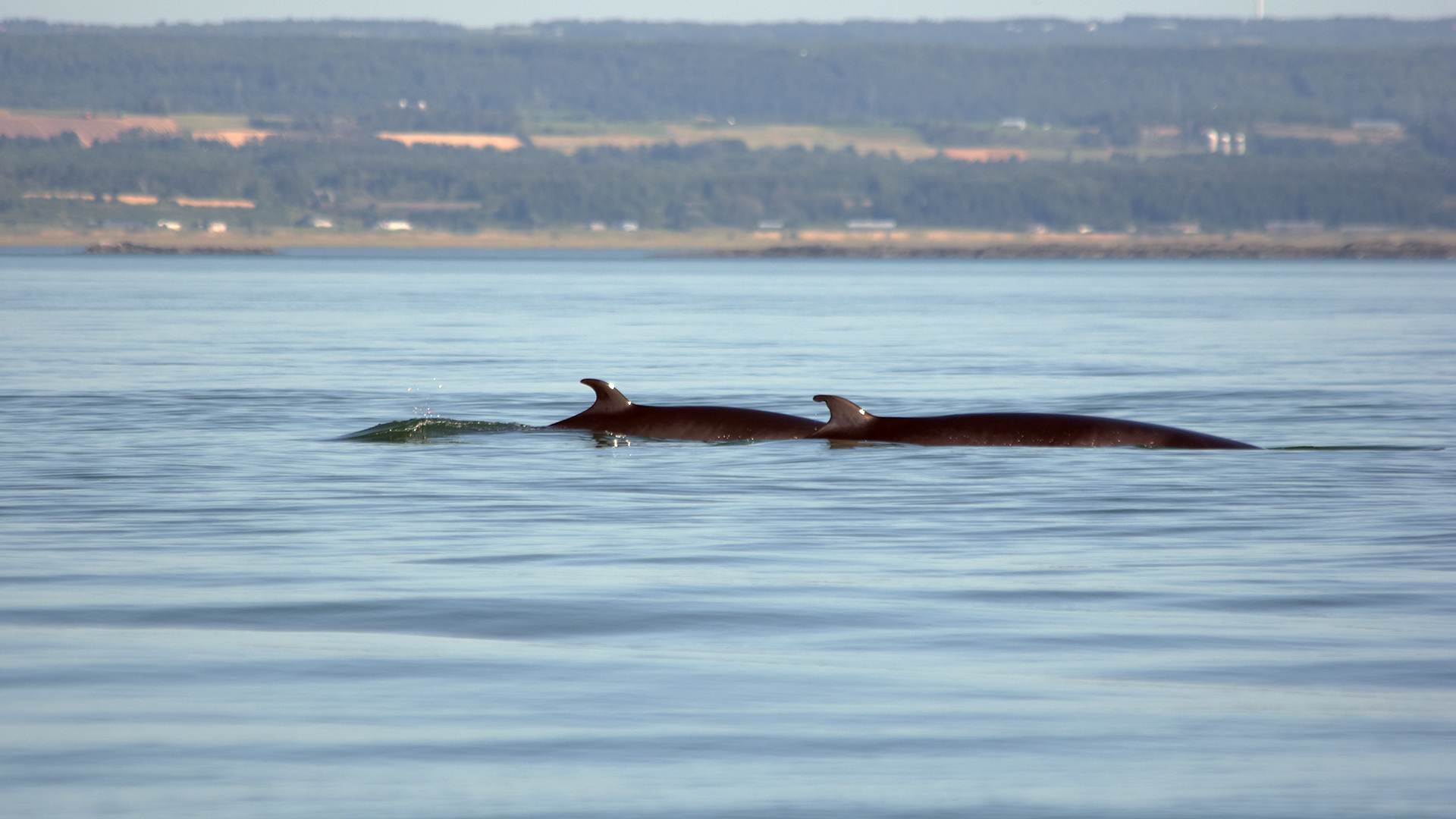
Credits: GREMM
Two minke whales swim together in the St. Lawrence... But since these waters are visited almost exclusively by females, there is very little chance that they will meet their breeding partner here.

How does gestation take place in whales?
After fertilization, the fetus spends several months developing inside the mother’s uterus. Gestation is generally quite long in whales: between 10 and 18 months, depending on the species.
But in reality, if we take into account the size of these mammals, it’s actually a fairly rapid development... One mustn’t forget: it all starts from a single cell, whether we’re talking about a tiny mouse or a giant whale! Whales have just one calf at a time, as was the case with Petits Escoumins.
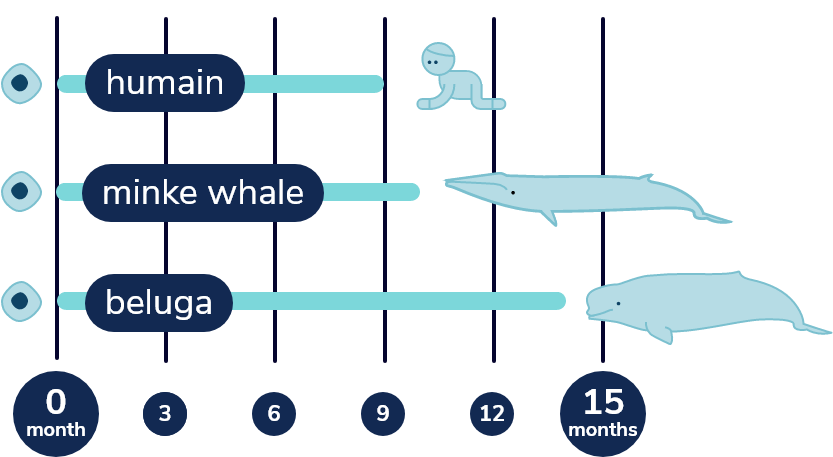

How does calving take place in whales?
Unlike most mammals, which are born head first, baby whales are usually born tail first.
Calves are also fully developed at birth and ready to swim on their own! The mother may, however, nudge them to the surface for their first breath.
Credits: Vancouver Aquarium

How do whales nurse?
Like all mammals, the calf latches onto its mother’s nipple, but calves do not have strong enough muscles in their mouths to suckle, so the mother must expel the milk.
Nursing can last 4 months for a minke whale like Petits Escoumins and up to 2 years for belugas. Whale milk is very rich, with a fat content between 13 and 53% so that calves can gain weight quickly.
Credits: GREMM
It is rather rare to witness a calf nursing in the wild. This new footage offers an incredible window into the behaviour of these fascinating animals.

Over the years, many chemicals have ended up in the St. Lawrence as a result of human activities, some of which are now found in the marine food chain.
These products are persistent, which means they take a very long time to break down. They are sometimes still present in the environment decades after being banned.
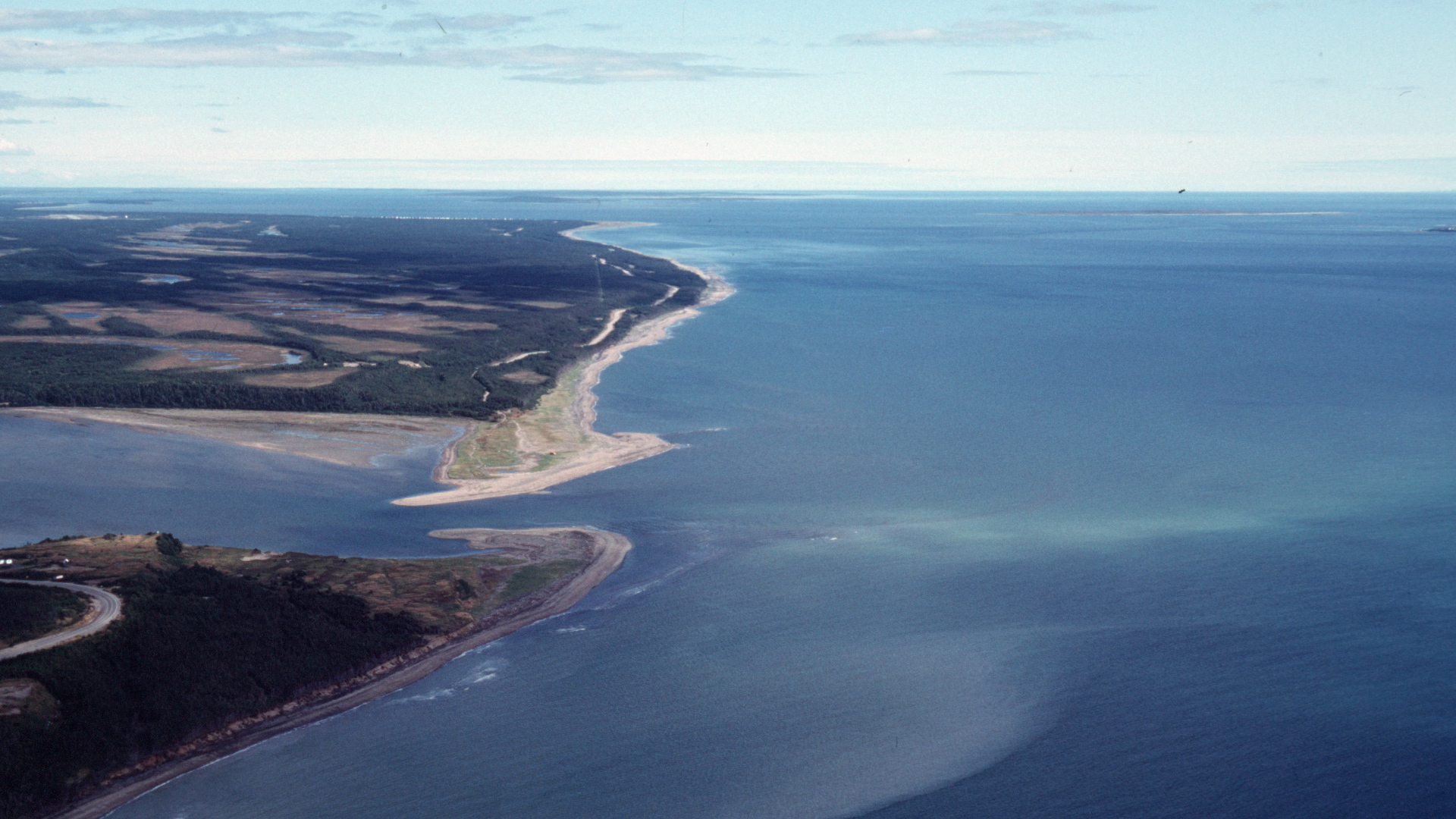
Credits: GREMM
The water quality of the St. Lawrence in those areas frequented by whales is not only influenced by the human activities that take place in the immediate vicinity. It is also affected by everything that takes place upstream of these waters, including the Great Lakes, Montréal and all the tributaries that empty into the St. Lawrence.

Over time, as long as the whale is in a contaminated environment, it will continue to accumulate more and more contaminants through a phenomenon called bioaccumulation, as well as through biomagnification.
Amongst other things, the animal will accumulate contaminants through its food. Any prey ingested by the whale contains a certain amount of contaminants. Over time, by feeding on contaminated fish or invertebrates, more and more contaminants accumulate in the whale’s tissues. This is called bioaccumulation. And, if the whale consumes prey that is closer to the top of the food chain, it accumulates more contaminants due to biomagnification.
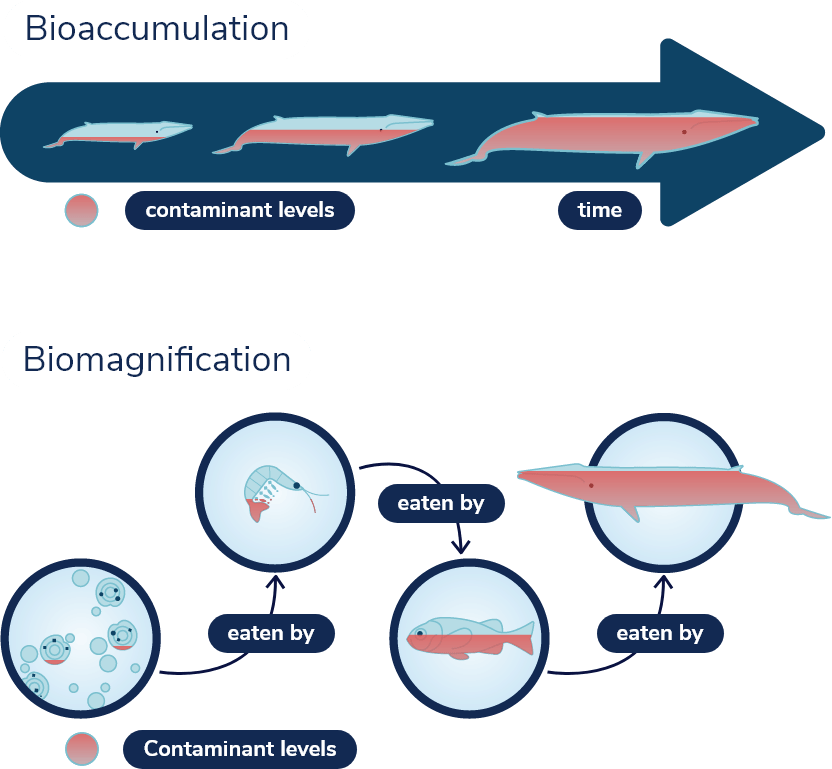

The various contaminants that a whale accumulates can have an impact on its health, affecting its immune system or even its reproduction. Some products are even carcinogenic.
Minke whales like Petits Escoumins are generally not as contaminated as belugas, which spend their entire lives in the St. Lawrence. For belugas, high contamination levels are considered to be one of the causes of the population’s current decline.
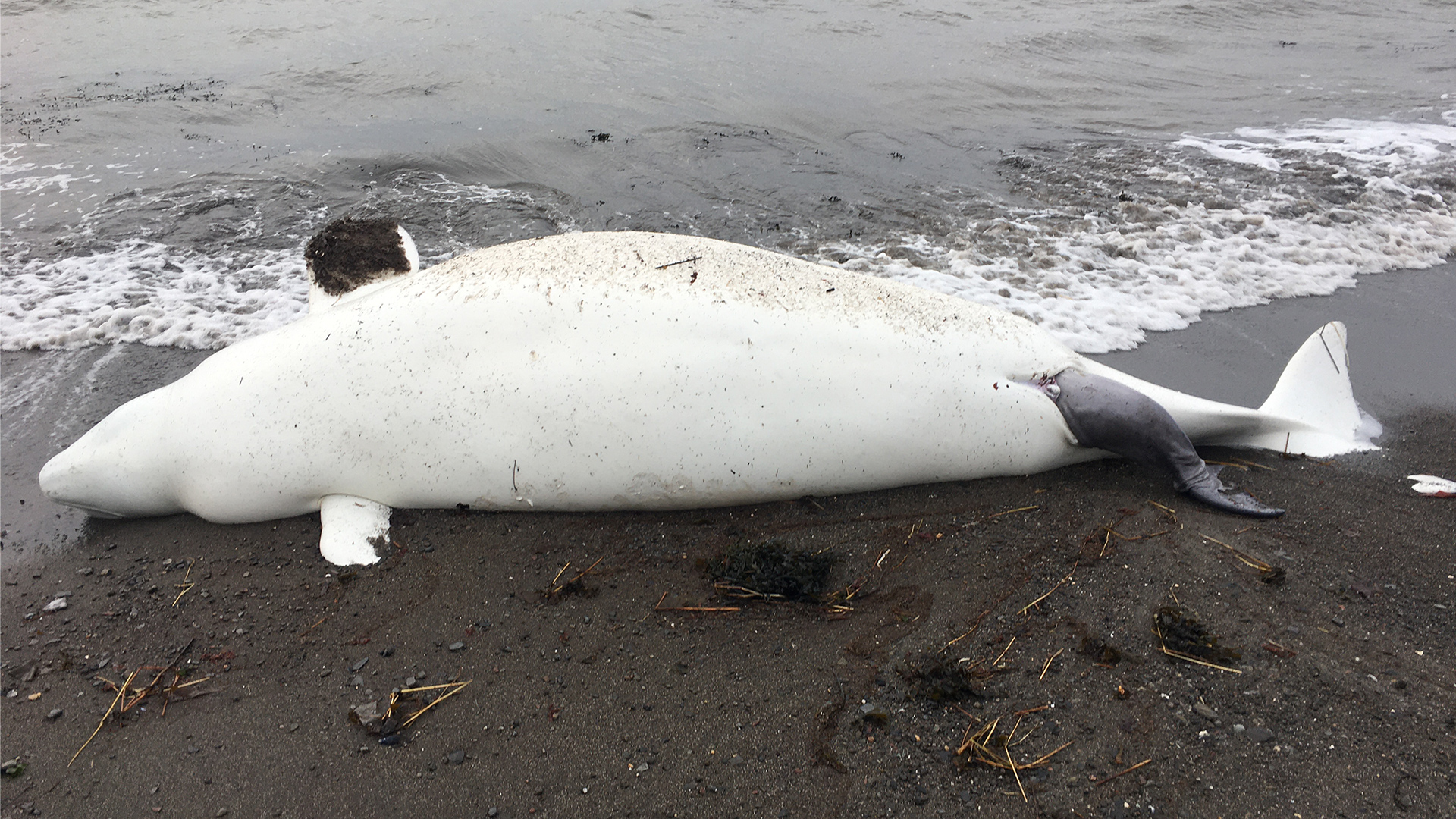
Credits: Charlène Dupasquier
This female beluga died giving birth. Calving difficulties are rather rare in nature, but are observed more frequently in St. Lawrence belugas. Researchers believe this might be linked to the presence of certain contaminants.

What can be done to reduce contamination?
Research and monitoring to better identify the sources of contaminants.
To be able to effectively limit the impact of contaminants, it is important to know where they come from, how they end up in the environment and how they affect whales.

Credits: GREMM
By analyzing a sample of whale fat, researchers can identify any contaminants that may be present.

What can be done to reduce contamination?
Ban problematic contaminants and apply the precautionary principle for any new products that are developed.
Prohibiting a problematic chemical limits its future spread in the environment. However, if this chemical has already accumulated in the environment, it may take several years before the situation improves. It is therefore important to take into consideration the potential impact that a new product might have over the long term.
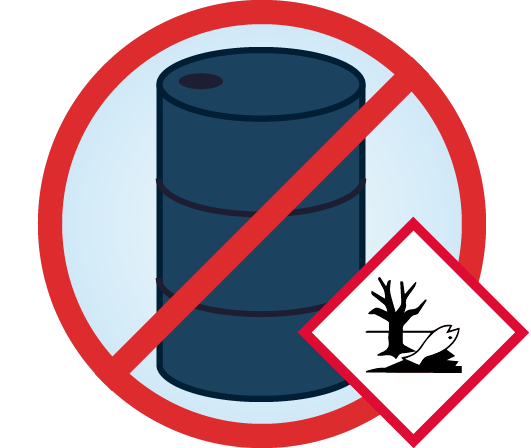

What can we do on an individual level to help reduce contamination?
Pay attention to the products we consume and how we dispose of them. Some contaminants found in whales are also found in everyday products.
For example, we can strive to properly dispose of our used electronics and expired medication, avoid using pesticides, and familiarize ourselves with the ingredients in our household products.




Now that you’ve heard Petits Escoumins’s story, let’s go meet the other whales!
Minke whale
Balaenoptera acutorostrata
Characteristics
North Atlantic minke whales

Weight
6 to 8 tons, up to 10 m

Length
18 to 20 m, up to 25 m

Lifespan
60 years

Population
approx. 200,000 individuals

Status
Not at risk
Petits Escoumins

Weight
unknown

Length
7 m

Birth - Death
before 1991 - October 1997

ID number
not known to researchers

Sex
Female

This is the skeleton of Petits Escoumins and that of the fetus she was carrying at the time of her death. The fetus is positioned where it would have been in its mother’s belly. They have been on display at Tadoussac’s Marine Mammal Interpretation Centre for several years now.

Minke whale
Balaenoptera acutorostrata
Characteristics
North Atlantic minke whales

Weight
6 to 8 tons, up to 10 m

Length
18 to 20 m, up to 25 m

Lifespan
60 years

Population
approx. 200,000 individuals

Status
Not at risk
Petits Escoumins

Weight
unknown

Length
7 m

Birth - Death
before 1991 - October 1997

ID number
not known to researchers

Sex
Female

This is the skeleton of Petits Escoumins and that of the fetus she was carrying at the time of her death. The fetus is positioned where it would have been in its mother’s belly. They have been on display at Tadoussac’s Marine Mammal Interpretation Centre for several years now.

